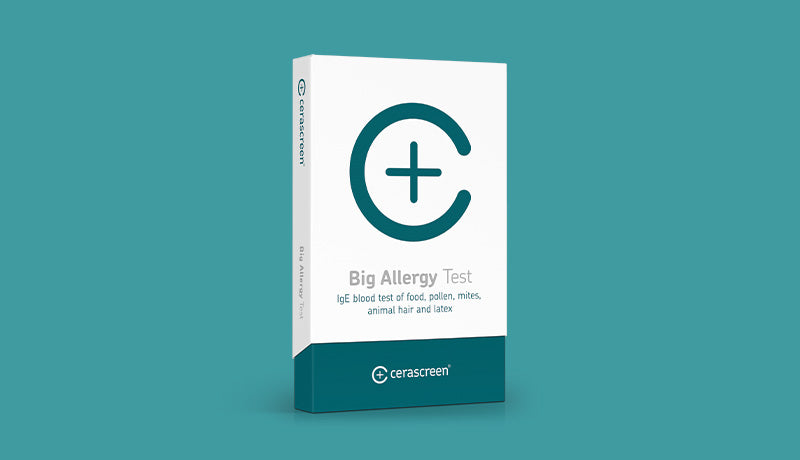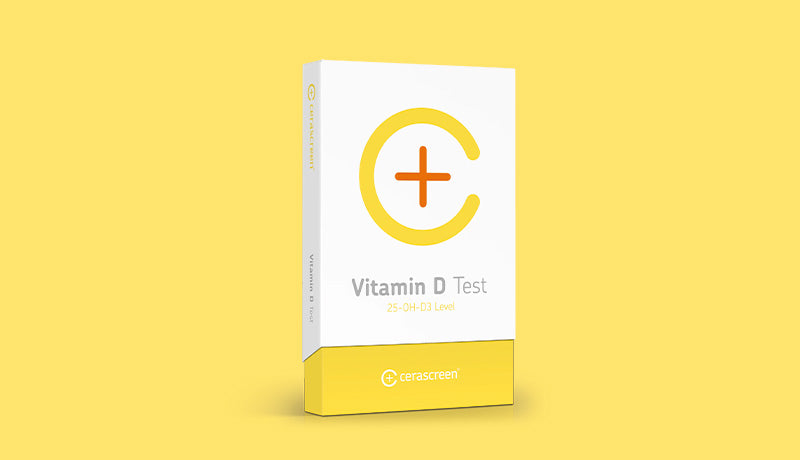Sneezing and sniffling, red eyes, tiredness and drowsiness – flying pollen can cause a lot of discomfort for those affected. Various flowering trees, grasses, grains and herbs can trigger pollen allergy, but many sufferers react particularly to birch pollen. Not just that, more and more people on the planet suffer from birch tree allergy – but why?
Experts estimate that about eight to 16 per cent of Europeans are sensitised to birch pollen, depending on the region. Birch trees are widespread in Europe and a single tree can produce up to 100 million pollen. In addition, the pollen count has risen continuously over the last few years, and the pollen seasons are becoming longer and longer due to climate change.[1] Meanwhile, it is also known that industrial fumes and car exhaust fumes chemically alter the pollen in such a way that they irritate our immune system and thus promote the development of birch pollen allergy.[2]
But what exactly is birch tree pollen allergy and how does the body react to such an allergy? When does birch pollen fly and which symptoms indicate a birch pollen allergy? Find out answers to these all-important questions in our blog article on birch pollen allergy.
What is birch pollen allergy?
With birch pollen allergy, your body reacts allergically to components of birch pollen that are actually harmless – you will notice this in typical allergy symptoms such as rhinitis, sneezing episodes or watery eyes.
Birch trees are wind pollinators, which means they produce particularly fine pollen that is carried for miles by the wind. The fine birch pollen can then enter our bodies when inhaled.[3]
For people who are allergic to birch pollen, the immune system classifies certain proteins in birch pollen as dangerous and fights them as soon as they reach the mucous membranes of the eyes, nose, mouth, throat or lungs. The defence cells of the immune system release various messenger substances, which then lead to the symptoms of an allergic reaction.[4]
Read about different types of pollen allergy, the hay fever season and how our immune system reacts to pollen in our dedicated Health Portal article.

When is the peak season for birch pollen?
The flowering period of birch trees currently takes place annually between March and May – this is when birch pollen flies. Birch trees are often found at the edges of woods, fields, heaths, moors and wasteland. But even if you live in areas where no birch trees grow, the pollen is likely to affect you – it can fly hundreds of kilometres.[5]
Incidentally, many sufferers also feel symptoms before and after the birch pollen season – for example, when alder and hazel are in bloom. These shrubs produce pollen that is very similar to birch pollen. The immune system can confuse the two pollen types, meaning it tries to fight these allergens off – just like birch pollen.[6] Experts therefore estimate that many sufferers experience symptoms for up to six months.[1]
What are typical birch tree pollen allergy symptoms?
People with birch tree allergy notice the symptoms mainly in parts of the body with which the birch pollen directly comes into contact – the mucous membranes of the eyes, nose and mouth. Those affected often suffer from typical hay fever symptoms such as:[7]
- frequent sneezing, stuffy or runny nose
- red, itchy and watery eyes
- itching in the nasopharynx or on the roof of the mouth
- reddened skin
- difficulty breathing, coughing or shortness of breath
- headache, tiredness and weakness

Birch pollen allergy foods: what foods contain birch pollen?
During the birch pollen season, many people who are affected can no longer tolerate certain foods – for example, certain types of fruit. Experts also call this a cross allergy – or cross-reactivity.
According to estimates, about 70 per cent of people with birch pollen allergy also react to certain foods, especially apples.[8] The reason for this is that the protein particles of birch pollen and an apple are so similar that the immune system sometimes cannot tell them apart and fights them equally.
The good news is that such food allergies often only cause mild symptoms and usually only occur during the birch pollen season.[9] If you are unsure about whether you are sensitised to certain foods – especially those associated with a birch pollen allergy, you can take a food intolerance and food allergy test to determine any sensitivities or cross-reactions.
Read more: Discover the differences between a food allergy and intolerance in our dedicated Health Portal article!
What are typical cross sensitivities with birch pollen allergy?
Various fruits, nuts and vegetables could cause cross allergies in people with birch pollen allergy:[9]
- Fruit (apple, peach, plum, nectarine, kiwi, cherry, pear)
- Nuts (hazelnut, almond)
- Vegetables (carrot, celery, raw potato, soy)
How do you test for birch pollen allergy?
If you suspect that you suffer from a birch pollen allergy, you should first keep a symptom diary and discuss your symptoms with your doctor.
Birch pollen allergy can then be tested for by a skin prick test or a blood test. This can determine whether your body is sensitised to birch pollen allergens – that is, it has formed antibodies against them.[6]
A pollen allergy test – whether it is performed at home or at your doctor’s surgery – is designed to screen for allergies to different types of pollen. These tests involve taking a small blood sample and sending it in to a specialised medical laboratory. The laboratory analyses the concentration of IgE antibodies against birch pollen and various other allergens such as hazel, alder and various grasses.
How do you treat birch pollen allergy?
In fact, avoiding birch pollen is the most important measure you can take to prevent symptoms – however, this is difficult to implement in reality, as pollen is often present in the air we breathe. Other treatment options are therefore:[6]
- Medication (antihistamines, cortisone supplements)
- Allergen immunotherapy (hyposensitisation)
- Nasal irrigation
Did you know that nasal irrigation involves flushing the passages of the nasal cavity with a saline solution? This makes it easier to get rid of pollen and secretions, and the symptoms improve. Nasal irrigation kits are available in chemists and pharmacies.

Tips on how to treat birch pollen allergy
We have put together some practical everyday tips for you, with which you can additionally prevent the symptoms of birch pollen allergy:[10]
- Attach pollen screens to your bedroom window.
- Take worn clothes out of the bedroom. Do not let washed clothes dry outside.
- Avoid too much outdoor exercise because the respiratory tract can become more irritated.
- Wear sunglasses that fit tightly around the eyes. They protect the eyes from pollen.
- Wash your hair before going to bed.
Birch pollen allergy – at a glance
What is birch tree pollen allergy?
With birch pollen allergy, your body reacts allergically to components of birch pollen that are actually harmless. It classifies them as dangerous and triggers an immune reaction.
Birch pollen flies every year from March to May. However, many sufferers also notice symptoms before and after the birch blossom season. This is because plants related to the birch, such as hazel and alder, produce pollen that the body can confuse with birch pollen and also fights against.
What are typical birch pollen allergy symptoms?
Typical birch pollen allergy symptoms are frequent sneezing, a blocked or runny nose, red, itchy and watery eyes, itching in the nasopharynx, reddened skin, coughing or shortness of breath, headaches, tiredness and weakness.
What are typical cross allergies associated with birch pollen allergy?
Various fruits (such as apple, pear, stone fruit and kiwi), nuts (such as hazelnut and almond) and vegetables (such as carrot, celery, raw potato, soy) can cause cross allergies in people with birch tree allergy.
How is birch tree pollen allergy diagnosed and treated?
A birch pollen allergy can be detected by a skin prick test or a blood test.
Avoiding pollen is the most important step you can take to prevent symptoms. Other treatment options include hyposensitisation, taking medication and regular nasal rinses with saline solution.
Everyday tips such as putting pollen screens on the windows, not drying washed clothes outside or wearing tight-fitting sunglasses can help to improve the symptoms of those affected.
Sources
[1] Biedermann, T., Winther, L., Till, S. J., Panzner, P., Knulst, A., Valovirta, E. ‘Birch pollen allergy in Europe’, Allergy, vol. 74(7), p. 1237–1248, 2019, doi: https://doi.org/10.1111/all.13758.
[2] Shiraiwa, M. et al ‘The role of long-lived reactive oxygen intermediates in the reaction of ozone with aerosol particles’, Nature Chemistry, vol. 3(4), art. no. 4, Apr. 2011, doi: 10.1038/nchem.988.
[3] Deutsche Lungenstiftung e.V. und Verband Pneumologischer Kliniken e.V. (VPK), ‘Als Pollenallergiker auf Windbestäuber im Garten verzichten’, 25 April 2012, available at https://www.lungenaerzte-im-netz.de/news-archiv/meldung/article/als-pollenallergiker-auf-windbestaeuber-im-garten-verzichten/, accessed on 25 February 2021.
[4] National Health Service (NHS), ‘Hay fever symptoms and treatments’, 13 November 2020, available at https://www.nhsinform.scot/illnesses-and-conditions/immune-system/hay-fever, accessed on 25 February 2021.
[5] Universitätsklinikum des Saarlandes, ‘Allergene Pflanzen’, available at https://www.uniklinikum-saarland.de/de/einrichtungen/kliniken_institute/medizinische_kliniken/innere_medizin_v/patienten_informationen/pollenwarndienst/allergene_pflanzen/, accessed on 25 February 2021.
[6] Deutscher Allergie- und Asthmabund e.V., ‘Pollenallergie’, available at https://www.daab.de/allergien/wichtig-zu-wissen/hauptausloeser/pollen/, accessed on 1 March 2021.
[7] Zuberbier, T. ‘Pollenallergie’, European Centre for Allergy Research Foundation (Stiftung ECARF), July 2016, available at https://www.ecarf.org/info-portal/allergien/pollenallergie/, accessed on 1 March 2021.
[8] Popescu, F.-D. ‘Cross-reactivity between aeroallergens and food allergens’, World J Methodol, vol. 5(2), p. 31–50, June 2015, doi: 10.5662/wjm.v5.i2.31.
[9] European Centre for Allergy Research Foundation (Stiftung ECARF), ‘Birke-Obst-Nuss-Gemüse-Syndrom | ECARF’, 27 October 2020, available at https://www.ecarf.org/birke-obst-nuss-gemuese-syndrom/, accessed on 1 March 2021.
[10] Lämmel, S. ‘Die Pollen der Birke fliegen’, Deutscher Allergie- und Asthmabund e.V., 10 April 2020, available at https://www.daab.de/blog/2020/04/birkenpollen-alarm/, accessed on 1 March 2021.



